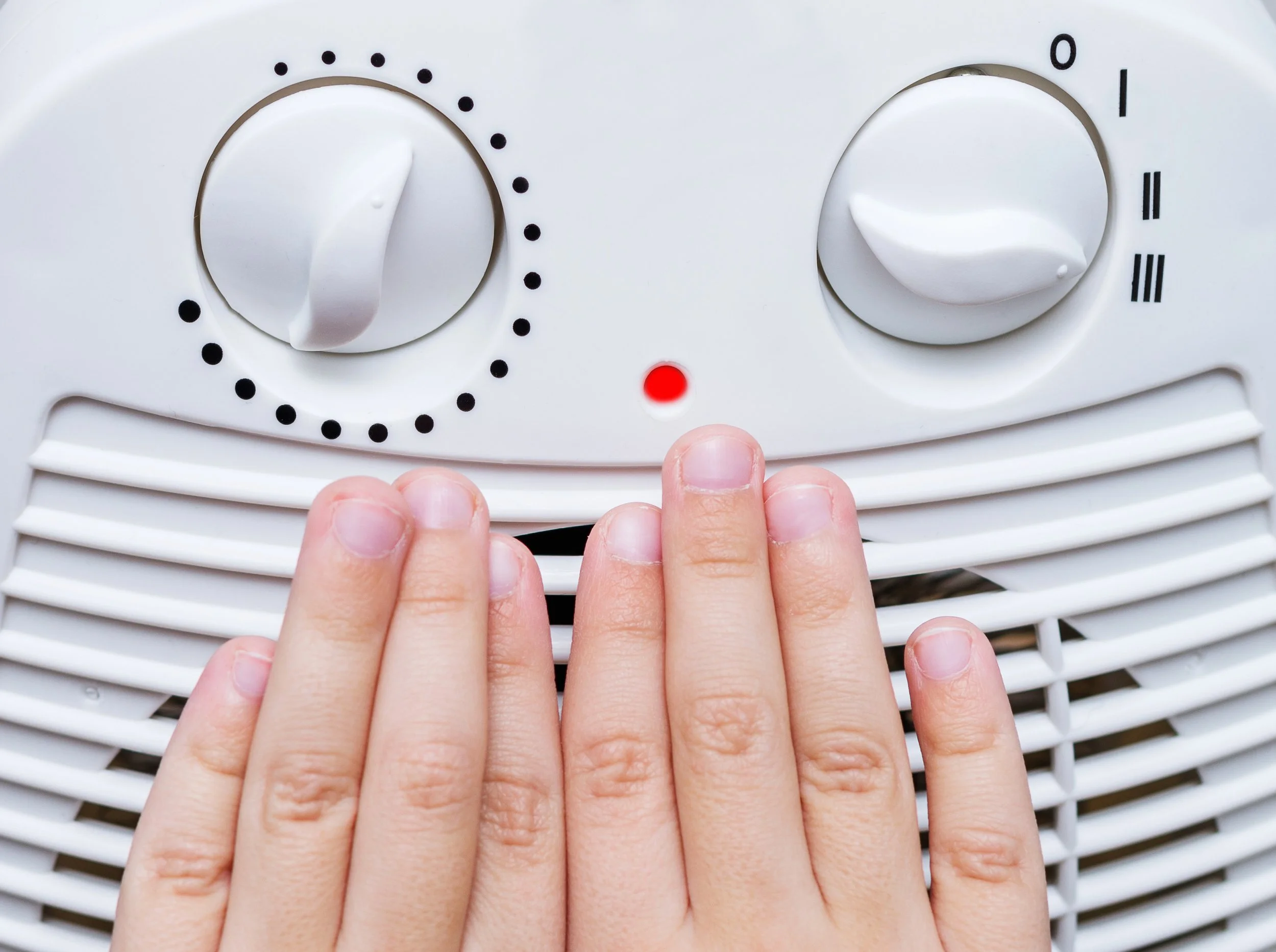
A resource for those seeking information on organizing and transforming spaces.
How to Tell If Your Garage Door Needs Replacing
Here's an interesting fact: upgrading the garage door ranked number two among the home improvements most homeowners undertake. Why? Homeowners can easily recoup 94% of the costs when replacing their garage doors. Even if they have no plan to sell their property, many homeowners replace their garage door for other reasons.
Here's an interesting fact: upgrading the garage door ranked number two among the home improvements most homeowners undertake. Why? Homeowners can easily recoup 94% of the costs when replacing their garage doors. Even if they have no plan to sell their property, many homeowners replace their garage door for other reasons.
For instance, aside from improving curb appeal and increasing their home's sale value, homeowners invest in garage door installation to lower energy bills or boost their security at home. What makes garage doors a great investment is they can last for decades as long as they are looked after accordingly.
How to Know If You Need a New Garage Door
Understandably, your garage door needs to be maintained both for aesthetic and practical reasons. However, if you notice one or several of the symptoms below, it can indicate that you need to replace your garage door stat.
1: Problem opening or closing your garage door.
One telltale sign your garage door needs to be replaced is when it fails to close and open accordingly. If you notice that your garage door responds to control prompts erratically, you might want to take a closer look. You need to also observe if your garage door moves inconsistently or awkwardly.
Ideally, your garage door should not take more than a second to respond. If not, it can be due to the following:
Faulty connection - if your garage door responds inconsistently to buttons or switches, a faulty connection with the electrical circuitry is the likely culprit.
Faulty wiring - if your garage door moves awkwardly, it is possible that it has faulty wiring or is off its tracks.
Broken opener wires - if your garage door refuses to close or open, it can be a case of broken garage opener wires that render the circuitry dead.
2: Garage door shakes when closing or opening.
Your garage door is designed to move steadily and smoothly without any tremors. If you notice your garage door is shaky, there's likely a problem with the belt, rollers, tracking, or lubrication. Also, if you notice your garage door shaking, you need to have it repaired or replaced before the problems cause you massive inconvenience.
3: Garage door sags.
While shaky movements and strange noises are considered alarming, a sagging garage door is typically viewed as a benign quirk. However, it is a huge mistake to ignore a sagging garage door.
A sagging garage door can indicate a more serious problem that can be dangerous to vehicles, children, and pets if left unattended. A sagging garage door can be caused by a worn tension spring, dull rollers, or dulled tracks.
4: Garage door hesitates.
Whether you're returning home or heading out, a garage door that hesitates can be a cause of significant delay. If you are in a hurry, a 10-second delay can seem to take forever. Ideally, your garage door should not take more than a second to respond to your commands. Otherwise, there is something wrong with it.
If your garage door hesitates, it can be caused by electrical or mechanical shortcomings. For instance, the garage door opener cords might be broken, or the pulleys are corroded. It is also likely that the garage door hesitates because of bad rollers. Whatever the cause may be, it would be best to have it checked by a professional.
5: Broken or bent garage door hinges or tracks.
Your garage door's tracks keep it aligned properly along the edges as the door moves up and down. Hinges are also important as they allow the garage door to fold over the angle between the ceiling and the front of the garage. When left unattended, broken garage door tracks and hinges can cause other problems.
For instance, it can cause your garage door to become uneven. If there is a slight dip in one end, if the garage door raises and lowers, it becomes incapable of supporting the door accordingly. You might also need to have the rollers replaced as bad tracks can wear the rollers down significantly.
6: Increasing utility bill.
When your garage door is not in motion or open, it is designed to seal the garage tightly. This is crucial as your garage door can help keep the cold out during the winter months. In other words, your garage door plays a vital role in your home's insulation.
If a slight gap is present at the edges or bottom while your garage door is shut, it won't be able to do its job of sealing your house properly. During winter, when your garage door is compromised, you will be forced to turn up the heat to compensate. This can result in high heating costs that can add up over months and years.
Final Thoughts
Looking after your garage door properly can help ensure it works properly for many years. However, various parts will eventually erode over the years and need to be replaced. It is recommended that you have your garage door inspected once a year or every two years by a licensed expert to ensure it functions optimally for many years to come.
5 Inexpensive Ways to Improve Your Home's Energy Efficiency
If you’re like most people, lowering your energy bills and increasing your home’s energy efficiency is a big priority for you. The good news is there are ways to do that which are simple to implement but that can still have a big impact. Here are five of them.
If you’re like most people, lowering your energy bills and increasing your home’s energy efficiency is a big priority for you. The good news is there are ways to do that which are simple to implement but that can still have a big impact. Here are five of them.
Turn Off the Lights
This counts as one of the simplest ways to save some energy and some money. When you leave a room in your home, turn off the lights. If you’re working in your home office during the day, work by the light of the sun. When you’re not burning the lights all day, your home’s energy efficiency will be better overall.
Get Good Insulation
A lack of good insulation means that energy can easily escape your home. It’s also important to not just put insulation in the walls and the ceiling. Crawl space insulation plays an important role in this equation, too.
Invest in Energy-Efficient Lights
LED lights are made to be energy efficient. According to Energy.gov, your home’s lighting makes up about 15% of your home’s energy usage. By putting in LED lighting, you’ll save over $200 a year in energy costs.
Turn Down the Heat
Turning down your heat, particularly at night, counts as another simple way to lower your energy use. At night when you’re under the covers sleeping, you don’t need as much heat in your home.
Another option that you have is to use an electric blanket to heat your bed at night instead of using a space heater. This allows you to sleep under warm covers. It's also something that's easy to control. All you need to do is run the electric blanket for a few minutes to heat up your sheets before you go to sleep. Then just turn the blanket off. No need for a space heater.
Cut Down on Space Heater Usage
Your space heaters can suck away a lot of energy and drive up your energy bills. A better route to go might be to choose a room to spend time in, like the den or your bedroom and heat that room, while lowering the heat in the rest of the house.
Final Thoughts
Lowering your energy output doesn’t have to be a complicated affair. As this blog post demonstrates, doing something simple like turning out the lights can make a big difference over time. Doing more of these activities together makes the most impact of all.
How to Prepare Your House for a Hurricane
Hurricanes are mighty tropical storms that threaten coastal communities worldwide. They can cause severe damage to your home due to winds that can reach over 150 miles per hour and devastating rainfall. Thankfully, you can take some precautionary measures to limit the damage. Here’s how to prepare your house for a hurricane.
Hurricanes are mighty tropical storms that threaten coastal communities worldwide. They can cause severe damage to your home due to winds that can reach over 150 miles per hour and devastating rainfall. Thankfully, you can take some precautionary measures to limit the damage. Here’s how to prepare your house for a hurricane.
1. Review Your Insurance
Before you make any changes to your home, you should first review your homeowner’s insurance policy. Understand what it covers and what it doesn’t to determine if you need to increase your coverage. Most insurance companies in regions prone to hurricanes should cover the damages, but you still need to double-check to ensure your home is protected.
2. Gather Supplies
A comprehensive insurance policy will help you recover from the hurricane, but it won’t protect you from the storm itself. You must gather the right supplies and prepare to spend several days bunkered inside your house. Here is a list of everything you might need:
First-aid kit
Prescription medicines
Bottled water
Nonperishable food
Radio
Flashlight
Spare batteries
Portable phone charger
Toolbox
Matches or a lighter
Fire extinguisher
Waterproof bags
Duct tape
Local maps
Cash
These items provide the sustenance and security to make it through a hurricane. If the power goes out, you still have heat and lighting. You’ll have plenty of provisions if you can’t make it to a grocery store. Medical care and communication are also covered.
3. Reinforce Your Home’s Vulnerable Areas
Hurricanes damage homes in many ways, but they cause the most harm through several familiar avenues, such as the roof, windows, doorways and other crevices around the house. Here’s what you can do to reinforce each area.
Roof: Inspect the roof for any loose shingles and repair them. Clean out the gutters to allow for proper water drainage. You should also consider buying truss tie-downs to help secure the roof to the rest of the building.
Windows: Lock your windows and board them up with plywood. Tape the plywood edges so no water flows through the cracks.
Doorways: Stuff the cracks underneath your doors with draft stoppers and towels to prevent water from seeping in.
Garage: You can also block off your garage door with towels or purchase a brace to prevent it from flying away with the wind.
Basement: If the hurricane floods your home, the water will accumulate in the basement first. Remove all valuable items and bring them to the upper floors.
Pipes and cables: Anywhere a pipe or cable enters your home is an opportunity for water to sneak through. You can’t do much to block these cracks, but you can closely monitor them and manage the slow leaks throughout the storm.
Reinforcing and monitoring these areas will reduce the amount of water that enters the building. If all goes well, the hurricane will pass, and your home’s interior will remain dry and safe.
4. Clean up Your Yard
One of a hurricane’s most impressive qualities is its ability to turn harmless outdoor items into weapons of destruction with just one strong gust of wind. With that in mind, you need to do a lot of outdoor maintenance around your house.
First, park your cars in your garage if you have enough room. If they must stay outside, ensure they’re out of the reach of any trees and activate the emergency brakes. Trim all branches close to your house that might cause damage, then remove all dead branches, loose stones and other debris from your yard.
All your outdoor furniture should come inside, or you can secure it to the ground with deck down anchors or another device. Potted plants also belong indoors. Trim what vegetation you can so it won’t tear out of the earth as easily. If you have a pool, do not cover it. Pool coverings are thin and can easily break from flying debris.
Your family should comb over your property one last time to pick up any leftover items lying around before the storm hits. Ideally, there should be no loose objects in your yard.
5. Have Multiple Power Sources
Most hurricanes are strong enough to disable entire power grids, so you must prepare for this situation by installing multiple energy sources within your home. A surge protector is a good start. It will protect all your electronic appliances from storm surges, which are common during hurricanes.
A generator serves as a fantastic second line of defense because it runs on propane or natural gas. Even the smallest models will keep your refrigerator running and air conditioning on if your primary power source goes out and the surge protector fails.
6. Plan an Evacuation Route
You must know where to go if the local government orders evacuation. Consider these factors when mapping out your route:
Make for higher ground and move further inland.
Avoid high-traffic areas like interstate highways. Try to follow side streets as much as you can.
Plan to stop at a grocery store or gas station if they are still open.
An evacuation alarm can signal at any moment as the storm approaches, so you should outline the route in advance and keep a bag of supplies on standby for a quick exit. Fill up all your vehicles with gas well before the storm arrives, whether authorities have called for an evacuation or not.
Prepare Your Home for Hurricane Season
Winter has already begun to pass, which means warmer days and the start of hurricane season are just around the corner. Prepare your home for these harsh tropical storms by following the above instructions and gathering the necessary supplies. You might just save your family’s lives.
How You Can Help Your Home Better Weather Wear And Tear
Since your home is the biggest purchase you're likely to make in your lifetime, you want to do all you can to keep it in fantastic condition. Unfortunately, Mother Nature may have other ideas along the way. From sleet and snow to rain, wind, and much more, the elements and other things can take quite a toll on your home. If you want to keep your home protected from the wear and tear of weather, here are some things you can try.
Since your home is the biggest purchase you're likely to make in your lifetime, you want to do all you can to keep it in fantastic condition. Unfortunately, Mother Nature may have other ideas along the way. From sleet and snow to rain, wind, and much more, the elements and other things can take quite a toll on your home. If you want to keep your home protected from the wear and tear of weather, here are some things you can try.
Repair Any Roof Damage
When high winds come along, the result can be shingles that get loose and leave your roof. Should this happen, your home will be subjected to possible water damage. If the leaks get bad enough, they could impact your home's interior as well as your foundation. By checking your roof for missing shingles or other signs of damage, you can get repairs made before more problems develop.
Get Rid of the Pests
While roof damage is something that can be obvious, having pests that are wreaking havoc with your home is something that's almost invisible. Should you have an office in your home, you may want to work with a pest control company to set up regular inspections for termites, ants, rodents, and other unwelcome visitors. Since pests such as these often seek out shelter in homes when cold weather arrives, be proactive in this area.
Power Wash Your Home's Exterior
Twice per year, you may want to give your home's exterior a good power washing. Along with keeping your home looking great, the power wash will wash away dirt and grime. This can be crucial to keeping your home's siding, paint, or other exterior areas in good condition, which if left unchecked could find you dealing with outside areas of your home that may be rotting or in need of other repairs.
Clean Out the Gutters
Last but not least, take some time to climb a ladder and clean out your home's gutters. While it's not a fun task to do, it is very important that it be done on a regular basis. Should you allow leaves and other debris to accumulate in your guttering, the result will be clogged gutters and downspouts. Thus, the next time a heavy rain comes around, water will be at the bottom of your home's foundation, rather than going down the downspout. Ultimately, your home's foundation will be damaged.
Once you take these steps, you'll be doing all you can to keep your home in great shape. By doing so, you'll gain peace of mind and save yourself from having unexpected repair bills.





